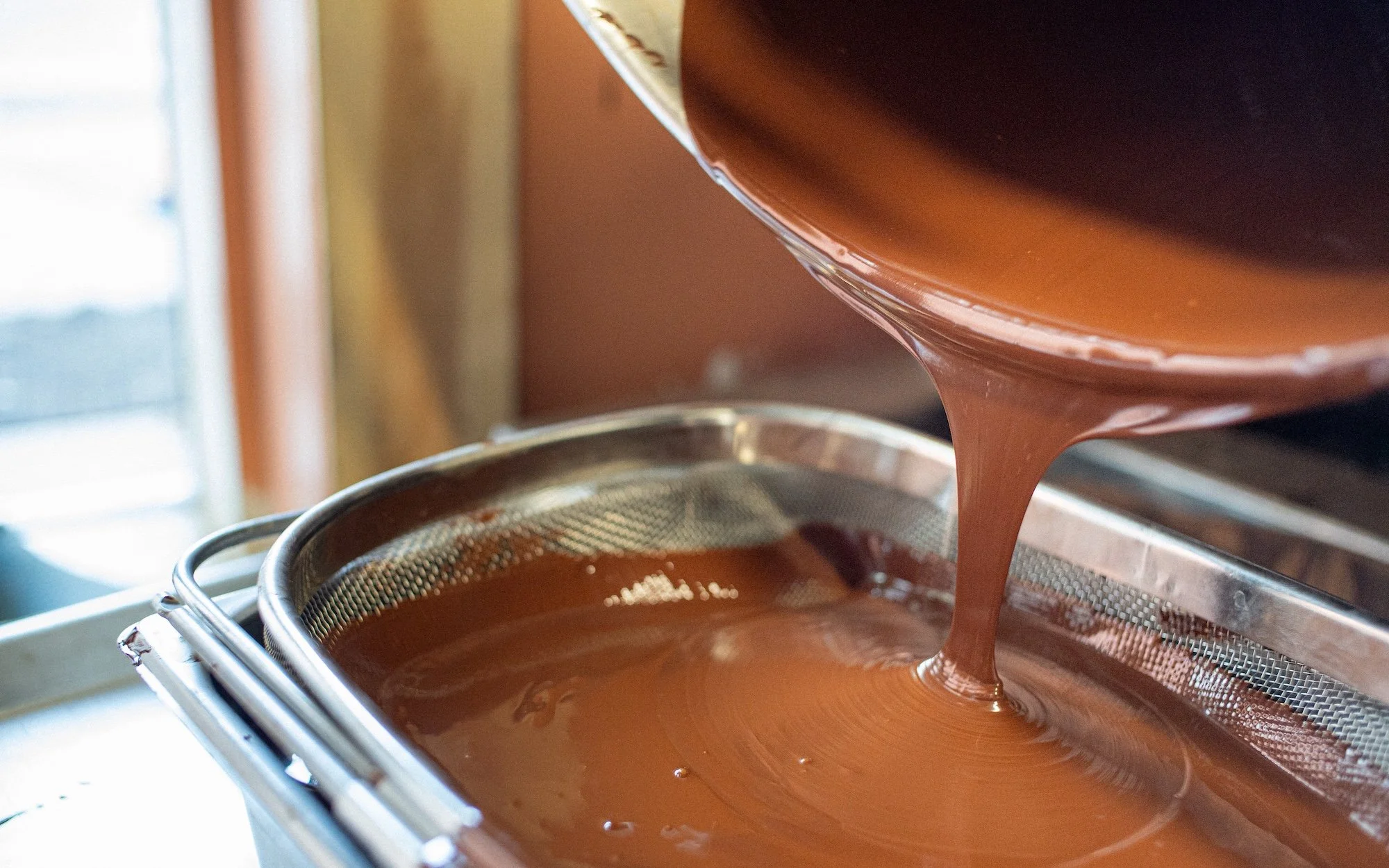Bean To Bar: How Craft Colorado Chocolate Is Reclaiming Cacao’s Roots
Even in its craft incarnations, chocolate can be nondescript. Plastic, foil or paper, the packaging offers little in the way of detail about the confection. Flavor and texture, a quip about the chocolatier, perhaps a general notion of sourcing, but nothing to connect a farm, a process, a person, to the finished product.
Bean to bar chocolate seeks to remedy just that. Through a more direct approach to sourcing and a more inclusive artisan process, bean to bar allows chocolate lovers to have a more intimate relationship with their candy.
Conor Griffin, owner of Lore Cacao in Paonia, is no stranger to chocolate. A third-generation chocolatier, Griffin grew up learning the process and practice of a chocolate maker at the Boston-area institution, Watson’s Candies. Much of that history fortifies his shop, from his patient hands to his nearly 100-year-old kettle. It imbues his craft with the familial warmth that has carried his mother’s shop for so long.
Lore Cacao in Paonia. Photos by Bodhi Gilroy.
Lore Cacao’s focus, however, is not exclusive to Griffin’s family history. Lore finds focus and meaning in cacao’s history itself.
The cacao industry has a colonial and contemporary history rife with exploitation. Child labor, slavery and environmental abuse abound throughout the industry, throughout time. As with many mass-market commodities, a global demand for cheap and available chocolate has led to systemic abuses for centuries.
“I was a teen when I started paying more attention to traceability in the supply chain,” reflects Griffin. “And the best way to ensure good practices is to work with small distributors and direct trade with co-ops and farms.”
Large-scale farming operations demand uniformity. Supermarket candy bars are made to taste identical every time, so buyers know exactly what to expect. But this homogeneity comes at a cost.
“It harms the soil, ecosystems and cultures rooted in the growing of cacao,” says Griffin.
Roughly 70 miles away in Grand Junction, another chocolate maker took note of the industry’s missteps. They left such an impression that owner and chocolatier Keane Karnan named his shop Dirty Lil Cacao.
To Karnan, much of the dirty not-so-little secret is that, through exploitation from corporations and middlemen, “cacao farms have too small of a margin” to be sustainable, to say nothing of being profitable. The result is cyclical poverty and exploitation through much of the chocolate growing world.
Karnan, however, embraces a more direct relationship with farmers, as well as regional coops. This results in equitable pay for each person in the chain, from bean to bar.
And the chocolate just tastes better. Certainly there’s a levity to eating a candy with moral considerations, but it’s also that bean to bar chocolate is more nuanced.
Karnan’s chocolate is as “premium as [he] can make it,” because the control afforded by the bean is unparalleled. “It’s entirely my own recipe,” continues Karnan, as he details a process filled with inspecting, roasting and aging — variables completely out of the hands of most chocolate makers.
This can be especially important when working with beans from different regions. “We know about it in wine, but there is terroir in cacao beans, too,” explains Karnan. From Fiji to Thailand, Africa to Mexico, the aromatics and flavors of cacao are varied and vibrant. Berries, spice and flowers, there are subtleties in many regional beans that are unimaginable from mass-market chocolate.
“The taste you associate with chocolate is the flavor of Ghana, of the Ivory Coast,” says Karnan. And in a world so wide and vibrant, Karnan seeks to bring a more nuanced view of the sweet treat through a more individualized process.
Back in Paonia, Griffin expands, “Maintaining that distinct terroir creates the most authentic flavor. On my end, I use a lighter roast profile, pure and simple ingredients — just cacao and coconut sugar — and carefully monitor the flavor expression during the granite stone-grinding process.”
Today’s cacao market is saturated with greenwashed labels touting words like “ceremonial” and “holy,” while offering little transparency about the process or the people who make such “rituals” possible.
“The work I participate in — sorting, hands and eyes on each bean, all the way through to its completion as a chocolate bar — is a ritual in itself,” Griffin says. “There’s so much gratitude that blossoms from being part of this cooperative cacao cycle, which completes itself with a happy customer. That’s the ritual for me.”
Originally published in the fall 2025 issue of Spoke+Blossom.




